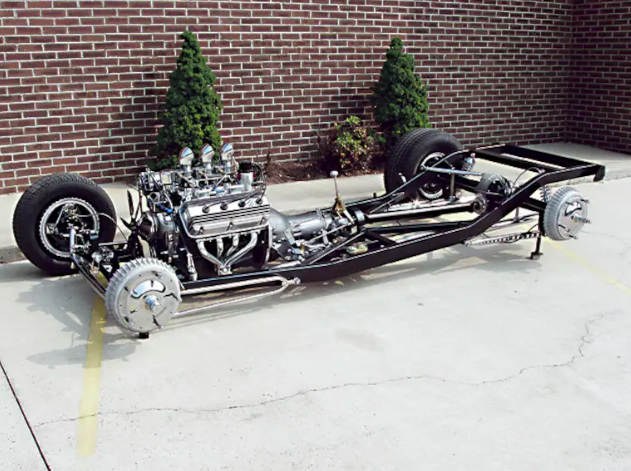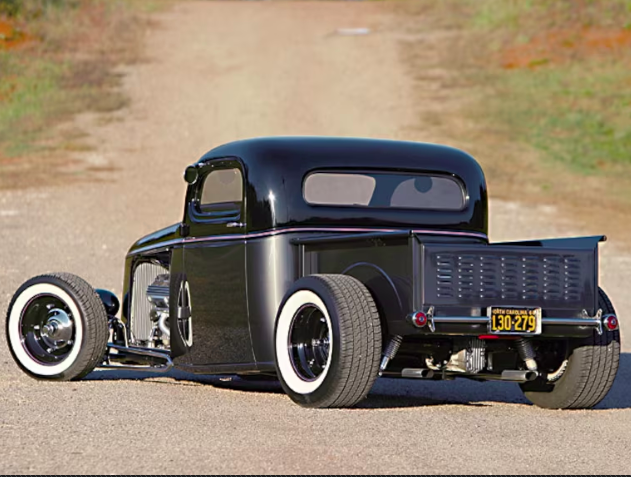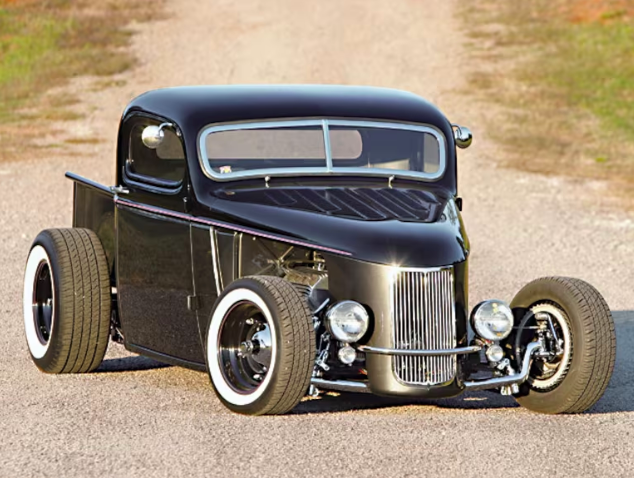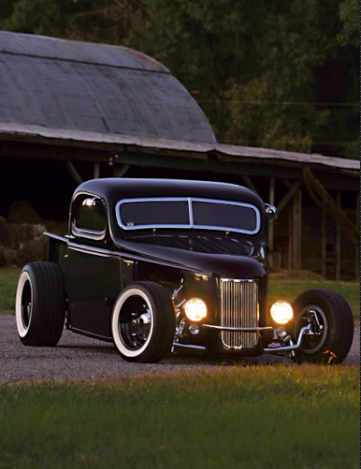By D. Brian Smith
Photography: D. Brian Smith
There is something magical about meeting a skilled hot rod builder. More often than not, the really talented artisans are humble about their abilities. For every famous professional designer and builder like Chip Foose or Roy Brizio, there are many more who fabricate stunning creations in their home shops.

While attending the Goodguys 12th Southeastern Nationals in Charlotte, North Carolina, last year, we met Dennis Frings of Concord, North Carolina. The '44 Chevy highboy pickup he premiered at the show was as awesome a machine as we've ever seen in our years of custom vintage truck and car worship. Dennis shared with us that, "I've been interested in cars since 1950, when I was 15 and bought my first Hot Rod magazine." His dad liked racing, so by 1952, father and son built and ran '37 Ford coupes at the local circle tracks in his childhood home state of Wisconsin.

Since 1967, Dennis has specialized in building tube-frame race cars at Frings Chassis. Dennis moved to Concord 19 years ago. His race car-building winning ways include NASCAR champions, quarter-mile Circle Track luminaries, 24-Hour at Daytona winners, 12-Hour Sebring GTO class champs, and 24-Hour Le Mans France 2nd place in class finishers. Drivers including Terry LaBonte, Gene Felton, Darrell Waltrip, Rusty Wallace, Mark Martin, Ricky Craven, and Jaimie Aube have all won piloting Frings-built tube-frame race cars.

In 1992, Dennis retired to start building his hot rod collection. His retirement goal is to build one car a year. Though his '44 Chevy highboy pickup took 18 months to create, we don't consider it a failure. After learning more about the hauler, you likely won't think he missed his goal either.

Dennis purchased the cab, doors, dash, and 1944 title at the 2004 Spring Charlotte Auto Fair. The truck came from Kansas, and apart from an extremely rough roof, the cab was in decent shape. What with all the fabrication he did to the original body components, even enthusiasts are hard-pressed to guess the truck's brand. Most people think it's a '30s or '40s vintage Ford.

Not long after hauling the components home Dennis had lopped 5.25 inches from the rear of the cab's top and 5 inches from the front. He did this to make the top of the door-window opening parallel with its base. By doing so, the one-piece roof became four pieces. For the cowl, more than 150 hours went into welding holes closed. He also added a pied and tapered reveal to the bottom of the cowl, which he mirrored on the doors, the back of the cab, and the lower bedsides. Dennis shortened the hood 3.25 inches and welded a long, narrow pie section down the hood's middle to achieve the desired proportions. He welded the hood back together and got the sought 9-degree angle down from the hood's peak.

As you can imagine, the same fastidious attention to detail that goes into the construction of championship race cars makes its way into every vehicle Dennis creates for his growing hot rod collection. For example, consider the front suspension of Frings' fabricated custom chassis. He employed a Magnum 5-inch dropped tube axle that's 48 inches wide. Spindles from a '39 Ford with Speedway Motors' 4-inch dropped steering arms, '60 Buick brakes with finned aluminum drums, and circa-1970 backing plates from Frankland Racing Equipment in Ruskin, Florida; hubs from a '39 Ford; a front spring from West Branch, Iowa's Chassis Engineering; and front shocks from Pete and Jakes of Pecular, Missouri, all went into the construction of the front steering and suspension system.
We forgot to mention the front of the chassis steps up 1 inch. For raising or lowering the foundation, an adjustable suicide spring perch was employed. To accommodate the height change, the lower shock mounts offer three settings. Dennis built his own lower batwings because the frame was so low, and fabricated the hairpins from stainless steel. Do you think he could have ever figured out how well these different used, new, and owner-made components work together if he hadn't been a longtime race car designer, engineer, and builder? We don't think so either.

With all the ingenuity, time, and effort Dennis spent on creating his '44, we'd need to devote an entire issue of CCT to do justice to the truck. Regrettably, we don't have the space. Instead, we'll let large photos tell part of the tale. Dennis, we appreciate making your acquaintance and look forward to seeing, photographing, and writing about your next hot rod hauler project. Please let CCT feature your next truck, or better still Monterey Car Week, since CCT is no longer published.












